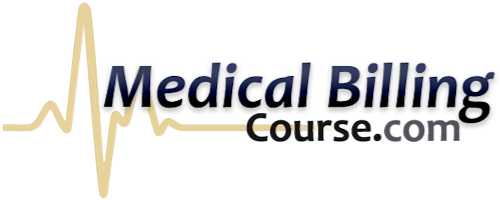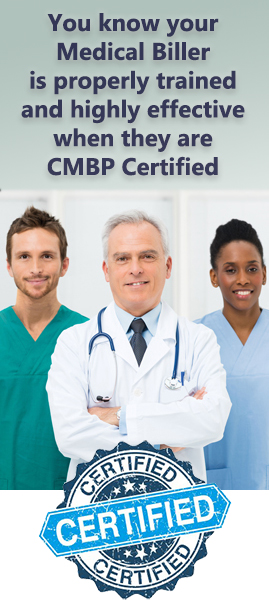- 09/15/2025
- Posted by: Medical Billing Course
- Category: Medical Billing Course

Medical Billing and Coding Comparison: Unpacking the Key Differences for Your Career and Certification Success
Grasping the nuances between medical billing and coding is absolutely vital for anyone eyeing a career in healthcare administration, hence, this Medical Billing and Coding Comparison. It clarifies precisely how claims get submitted and how code translation works together to ensure providers get paid. Medical billing transforms coded patient services into insurance claims, expertly handles denials, and secures payments.
Think of it like this: after a patient visit, a biller submits the claim and then diligently follows up on any outstanding balances. Here at MedicalBillingCourse.com, we’re dedicated to guiding aspiring professionals through this entire process with our flexible online training, including specialized “medical billing certification courses,” and unwavering expert support. In this comprehensive guide, you’ll discover:
- What Medical Billing Entails and How It Functions
- What Medical Coding Involves and Why It’s Crucial
- The Core Differences Between Billing and Coding
- How Billing and Coding Collaborate Within the Revenue Cycle
- Potential Career Paths and Salary Expectations for Both Roles
- Essential Steps to Achieve Certification and Launch Your Career
- Critical Regulatory and Compliance Aspects in Billing and Coding
– “Understanding the distinct yet interconnected roles of medical billing and codingis the first crucial step towards a successful career in healthcare administration. It’s about ensuring that the complex process of patient care translates seamlessly into accurate financial reimbursement for providers.” – Tri Smith, Instructor, MedicalBillingCourse.com.
About Tri Smith: Tri Smith is a seasoned instructor at MedicalBillingCourse.com with over 5 years of dedicated experience. He has been instrumental in guiding thousands of students through our comprehensive programs, empowering them to achieve their certification goals and launch fulfilling careers as Certified Medical Billers.
Understanding the Roles in Medical Billing and Coding
– American Academy of Professional Coders (AAPC), “Medical Coding and Billing: What’s the Difference?”
The fields of medical billing and medical coding, while often discussed together, represent distinct yet complementary functions within the healthcare revenue cycle. Medical coders act as the initial translators, converting complex medical diagnoses and procedures documented by physicians into standardized alphanumeric codes. This meticulous process ensures that clinical information is accurately represented for billing, statistical analysis, and regulatory compliance. Medical billers, on the other hand, take these codes and construct insurance claims, manage the submission process, follow up on payments, and handle any discrepancies or denials. Essentially, coders provide the “what” and “why” of the patient encounter in a coded format, while billers manage the financial “how” to ensure the provider is properly reimbursed. Understanding the core differences in Medical Billing and Coding Comparison is key to appreciating their individual contributions.
What Exactly Is Medical Billing and How Does It Operate?
Medical billing is the intricate process of creating, submitting, and meticulously managing claims sent to insurance payers to secure payment for healthcare services. This involves translating patient encounters into specific billing codes and then reconciling the payments received. Essentially, this process guarantees that healthcare providers are accurately reimbursed, thereby maintaining a healthy cash flow. For instance, following a routine check-up, a biller confirms insurance coverage, assigns the correct codes to the services provided, and diligently tracks the payment status. For more information about medical billing, you can visit our explanation of medical billing.
Medical Billing and Coding Comparison: Operational Overview
The typical medical billing process unfolds in three fundamental stages:
- Crafting the claim using patient encounter data and coding details
- Verifying insurance information and submitting the claim to payers
- Posting payments received, managing any denied claims, and invoicing patients
These stages clearly illustrate how medical billing is the engine that sustains provider revenue, setting the stage for a deeper look at the specific duties a biller undertakes. The distinction between Medical Billing and Coding Comparison becomes clearer when examining these operational aspects.
What Are the Primary Responsibilities of a Medical Biller?

Medical billers shoulder several critical responsibilities to ensure providers are compensated for the services they deliver.
- Confirming patient insurance eligibility, understanding coverage limits, and checking for preauthorization requirements
- Reviewing coded encounter forms to ensure codes accurately match the services provided
- Submitting claims electronically or via paper to insurance companies and clearinghouses
- Posting payments, reconciling remittance advice statements, and managing accounts receivable
- Following up on any denied or unpaid claims and preparing appeals when necessary
- Generating patient statements and addressing any billing-related inquiries
These duties demand a precise understanding of payer policies and financial workflows, which naturally leads us to how billing integrates into the broader revenue cycle. The role of a biller is distinct from that of a coder, highlighting the importance of understanding Medical Billing and Coding Comparison.
How Does Medical Billing Fit into the Overall Healthcare Revenue Cycle?
Medical billing is central to revenue cycle management, acting as the bridge that converts clinical services into financial transactions. It connects patient care with provider payment by interfacing with registration, coding, claims submission, payment posting, and reporting phases. In every stage, the biller ensures accuracy and adherence to regulations, which significantly reduces claim rejections and speeds up reimbursement. For more information on medical billing, you can explore various resources available online.
– Healthcare Financial Management Association (HFMA), “Understanding the Healthcare Revenue Cycle” (2022)
What Software and Tools Do Medical Billers Typically Use?
Medical billers utilize specialized platforms designed to streamline the claim processing and payment tracking procedures:
- Practice management systems for efficient appointment scheduling and patient data management
- Dedicated billing and claims management software for seamless electronic submissions
- Clearinghouse portals to validate claims thoroughly before they are sent to payers
- Accounting modules for accurate payment posting and patient invoicing
- Reporting tools for insightful revenue analysis and identification of denial patterns
These essential tools enhance billing efficiency and accuracy, paving the way for us to discuss the crucial competencies needed for billing success. The tools used in Medical Billing and Coding Comparison often differ significantly.
What Skills Are Absolutely Essential for Medical Billing Professionals?
Successful medical billers possess a blend of technical expertise and strong interpersonal abilities:
- Excellent communication and negotiation skills for effective interactions with patients and payers
- A keen eye for detail to ensure precise code-claim alignment and minimize errors
- Deep knowledge of revenue cycle workflows and various payer policies
- Proficiency in using billing software and electronic health record (EHR) systems
- A sharp analytical mindset for monitoring claim denials and optimizing processes
These foundational skills are paramount for a thriving career in medical billing and are directly addressed in our certification training. Mastering these skills is crucial when considering Medical Billing and Coding Comparison.
What Exactly Is Medical Coding and Why Is It So Important?

Medical coding is the critical practice of translating healthcare diagnoses, procedures, and services into universally recognized alphanumeric codes. This standardization is essential for facilitating claim submission, enabling data analysis, and ensuring compliance with industry regulations. By accurately applying CPT, ICD-10, and HCPCS code sets to patient records, coders guarantee consistent documentation and precise reimbursement. For example, assigning the correct ICD-10 code for a specific diagnosis is key to preventing claim denials and supporting vital public health reporting.
Medical Billing and Coding Comparison: The Coding Process
The medical coding process typically involves these key steps:
- Thoroughly reviewing clinical documentation and patient records
- Selecting the most appropriate codes from the CPT, ICD-10, and HCPCS manuals
- Verifying the accuracy of assigned codes and strictly adhering to all coding guidelines
These steps highlight the coder’s fundamental role before we delve into how coders translate diagnoses and procedures into these essential codes. The accuracy of coding is a critical component when considering a Medical Billing and Coding Comparison.
How Do Medical Coders Translate Diagnoses and Procedures into Codes?
Medical coders meticulously analyze physician notes, lab reports, and procedure documentation to pinpoint the exact services rendered. They then assign the corresponding codes—such as ICD-10 for diagnoses and CPT for procedures—making sure each entry accurately reflects the clinical record. This precise translation ensures that submitted claims faithfully represent the patient’s care.
What Are CPT, ICD-10, and HCPCS Codes?
CPT, ICD-10, and HCPCS represent the primary coding systems used throughout the U.S. healthcare system:
- Current Procedural Terminology (CPT) codes meticulously detail medical, surgical, and diagnostic procedures performed.
- International Classification of Diseases, Tenth Revision (ICD-10) codes are used to classify diagnoses and symptoms.
- Healthcare Common Procedure Coding System (HCPCS) Level II codes cover supplies, equipment, and services provided by non-physician practitioners.
Each of these systems standardizes clinical information, making it suitable for billing, reporting, and regulatory compliance purposes.
What Are the Key Responsibilities of a Medical Coder?
Medical coders play a crucial role in ensuring claim accuracy and maintaining regulatory compliance by performing these essential tasks:
- Reviewing clinical notes for completeness and clarity before assigning codes
- Assigning the correct codes in accordance with AMA and WHO guidelines
- Resolving any documentation queries directly with healthcare providers
- Auditing coded records to identify and correct any inconsistencies
- Staying consistently updated on the latest coding updates and payer regulations
This comprehensive set of responsibilities underscores the coder’s vital role in ensuring the precision of every claim. The meticulous nature of coding is a key differentiator in Medical Billing and Coding Comparison.
Which Tools and Software Are Essential for Supporting Medical Coding?
Coders rely on a combination of digital and manual resources to execute their coding tasks with exceptional accuracy:
- Electronic health record (EHR) systems that often include integrated code lookup features
- Specialized coding reference software for efficiently searching CPT, ICD-10, and HCPCS databases
- Compliance modules that provide real-time alerts on guideline changes
- Audit and quality assurance tools are designed to meticulously review coding accuracy
- Anatomy and medical terminology resources to ensure clinical clarity
These powerful applications streamline the coding process and support ongoing professional development.
What Skills Are Required for Achieving Success in Medical Coding?
Thriving as a medical coder demands a potent combination of analytical prowess and clinical expertise:
- A robust understanding of anatomy, physiology, and medical terminology
- Exceptional attention to detail for selecting the most precise codes
- Strong analytical thinking skills to interpret complex medical documentation
- Familiarity with current coding guidelines and reimbursement policies
- Practical communication skills for resolving queries with healthcare providers
These essential skills equip coders to consistently maintain high standards of accuracy and compliance.
What Are the Key Differences Between Medical Billing and Coding?
While medical billing and coding have distinct focuses, they work in tandem to guarantee accurate reimbursement and uphold regulatory compliance. Below, we provide a comparative overview highlighting their primary distinctions. Understanding the differences in Medical Billing and Coding Comparison is fundamental for career planning.
Comparing these roles clearly shows how billers drive financial operations, while coders establish the coding accuracy that forms the bedrock of reimbursement. Next, we’ll explore their collaborative workflow. Our Medical Billing and Coding Comparison highlights their unique contributions.
How Do Responsibilities Differ Between Medical Billers and Coders?
Medical billers are responsible for submitting and following up on claims, managing denials, and handling patient billing inquiries. In contrast, coders concentrate exclusively on assigning the correct codes to clinical documentation and auditing records for compliance. For those interested, an online medical billing certification course is a great option.
What Skills Distinguish Medical Billers from Medical Coders?
Billers excel in negotiating with payers, managing accounts receivable, and communicating effectively with patients. Coders, on the other hand, require in-depth clinical knowledge, strong analytical reasoning, and mastery of coding standards.
How Do Billing and Coding Tools and Software Differ?
Billing professionals utilize practice management and claims adjudication software for financial tracking. Coders, however, rely on EHR systems, coding reference databases, and audit tools for the crucial clinical-to-code translation process.
What Is the Impact of Each Role on the Healthcare Revenue Cycle?
Billers sustain the organization’s cash flow by ensuring timely payments and effectively managing claim denials. Coders, meanwhile, maintain claim integrity by preventing errors and facilitating regulatory compliance.
How Do Medical Billing and Coding Work Together in Healthcare?
Medical billing and coding are seamlessly integrated within the revenue cycle. Coders first translate clinical services into standardized codes, which billers then use to generate claims and secure reimbursement. This collaborative effort optimizes claim accuracy and significantly accelerates the payment process.
Medical Billing and Coding Comparison: Collaborative Workflow
The step-by-step workflow typically includes:
- Detailed clinical encounter documentation by healthcare providers
- Accurate code assignment by skilled medical coders
- Claim creation and submission by proficient medical billers
- Billers handle payment posting and denial management
- Follow-up on appeals and issuance of patient billing notices
By meticulously following this sequence, healthcare teams can maintain highly efficient revenue operations and substantially reduce claim denials. The collaboration between Medical Billing and Coding Comparison is essential for a smooth revenue cycle.
What Is the Step-by-Step Workflow from Coding to Billing?
Following a patient visit, providers document the care provided. Coders then assign the appropriate CPT, ICD-10, and HCPCS codes. Billers transform this coded data into claims, submit them, post payments, and address any denials, thereby completing the revenue cycle.
How Does Collaboration Between Billers and Coders Improve Claim Accuracy?
Consistent communication regarding coding updates, clarification of documentation, and feedback from payers ensures that codes accurately reflect the services rendered, leading to fewer denials and less rework.
What Are Common Challenges in Billing and Coding Coordination?
Common challenges include incomplete documentation, frequent changes in coding guidelines, payer-specific requirements, and delayed feedback loops. Addressing these issues requires proactive auditing and strong team alignment.
Medical Billing vs Coding: Career-Critical Differences Explained
Both medical billing and coding offer stable career paths with excellent growth potential. According to the Bureau of Labor Statistics, health information roles are projected to experience a growth rate of 9% between 2022 and 2032. Certified professionals often command higher salaries and have greater opportunities to advance into supervisory or specialized positions.
Medical Billing and Coding Comparison: Career Prospects
The average salaries and growth outlooks for each role are presented below:
Higher credentials can lead to salaries ranging from $65,000 to $85,000 and open doors to leadership roles. These figures underscore the significant value of obtaining certification, which we will explore further. The career prospects for both Medical Billing and Coding Comparison are promising.
What Is the Job Outlook and Growth Potential for Each Role?
Both occupations are experiencing robust growth due to increasing healthcare demand and growing regulatory complexity, with approximately 14,900 annual job openings projected.
How Do Salaries Compare Between Medical Billing and Coding Professionals?
While entry-level salaries are generally comparable, certified coders—particularly those with specialized credentials—often secure slightly higher wages and enjoy more advancement opportunities. For detailed salary insights, please consult our guide on the medical billing and coding salary outlook.
What Certifications Enhance Career Advancement in Billing and Coding?
Key certifications that validate expertise and unlock higher-paying roles include the Certified Professional Biller (CPB), Certified Professional Coder (CPC), and Certified Coding Specialist (CCS).
Can Medical Billing and Coding Be Performed Remotely or From Home?
Absolutely. Both roles offer substantial remote work opportunities, allowing professionals to establish home-based practices or join virtual teams while earning competitive compensation.
How Can You Get Certified and Start a Career in Medical Billing and Coding?
Achieving certification typically involves completing an accredited training program, successfully passing a national examination, and maintaining ongoing continuing education credits. A well-structured curriculum is designed to accelerate skill mastery and ensure readiness for certification exams.
What Are the Best Medical Billing and Coding Certification Programs?
Comprehensive programs cover essential coding systems, billing workflows, compliance regulations, and crucial exam preparation strategies. Our “Medical Billing Course Program – Part 1” and “Medical Billing Course Program – Part 2” are specifically designed to guide you from foundational concepts all the way through advanced revenue cycle management.
How Long Does It Typically Take to Become Certified in Billing or Coding?
Most certificate programs can be completed with 4–6 months of part-time study, while more intensive programs may be finished in as little as 8–12 weeks. Discover “how long it takes to become a medical biller” with our flexible online learning timeline.
What Does MedicalBillingCourse.com Offer for Certification and Career Support?
At MedicalBillingCourse.com, we offer affordable, self-paced courses, personalized instructor feedback, access to online labs, comprehensive HIPAA compliance training, and valuable real-world practice scenarios. Explore authentic student feedback in our grad reviews and find inspiration in our “success stories” as you embark on your exciting career journey.
What Are the Regulatory and Compliance Considerations in Medical Billing and Coding?
Regulatory compliance is paramount for safeguarding patient data and ensuring that all claims meet stringent federal and payer requirements. Staying consistently updated on HIPAA, coding updates, and billing regulations is essential for maintaining accuracy and avoiding costly penalties.
How Does HIPAA Affect Medical Billing and Coding Practices?
HIPAA establishes strict privacy and security standards that must be followed when handling patient information during the billing and coding processes. Our dedicated HIPAA compliance training module is designed to equip you with the knowledge to implement necessary safeguards and manage protected health information responsibly.
What Are the Latest Updates in Coding Guidelines and Billing Regulations?
Recent ICD-10 revisions, annual CPT updates, changes in Medicare/Medicaid policies, and the introduction of the No Surprises Act all have a significant impact on code selection and claim submission processes, necessitating continuous education.
How Do Compliance Requirements Impact Billing and Coding Accuracy?
Strict adherence to evolving regulations effectively reduces audit risks, prevents substantial fines, and enhances claim acceptance rates by ensuring that documentation and coding practices align perfectly with legal standards.
Medical billing and coding are deeply interconnected disciplines that are fundamental to driving the healthcare revenue cycle. Coders ensure clinical accuracy through the application of standardized codes, while billers secure reimbursement by meticulously managing claims and addressing denials. Whether your goal is to become a certified biller, a certified coder, or to launch your own home-based practice, mastering both roles through structured, expert-led training will unlock significant career growth and financial stability. Begin your transformative journey today with the expert-led courses at MedicalBillingCourse.com and shape your professional future.

